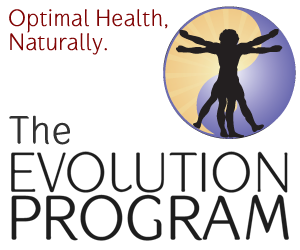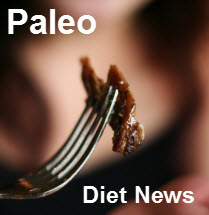Paleo Diet: To Kefir or Not To Kefir?
Kefir Grains, image courtesy of Wikipedia
Generally speaking, to be “Paleo” means to practice the exclusion of several groups of foods, that are seen as major contributors to ill health and disease. The strict autoimmune Paleo protocol (which is even more strict than normal Paleo) calls for the elimination of all grains, legumes, and dairy, but does that mean that all of these foods are bad for everyone? Of course not. In fact, Chris Kresser believes that kefir, a fermented milk product may be a very worth-while addition to your existing Paleo diet Template.
In an article from March 2nd 2012, entitled “Kefir: The not-quite-Paleo Superfood”, Chis writes:
“One of the key components of a strict Paleo diet is the complete elimination of dairy products. Unfortunately, this may lead to many dairy-tolerant individuals missing out on some of the most nutritious and beneficial foods on the planet. One dairy product that not only offers a wide range of vitamins and minerals, but also provides a variety of probiotic organisms and powerful healing qualities, is kefir (pronounced /kəˈfɪər/ kə-FEER).”
“What is Kefir?
Kefir is a fermented milk product that originated centuries ago in the Caucasus mountains, and is now enjoyed by many different cultures worldwide, particularly in Europe and Asia. It can be made from the milk of any ruminant animal, such as a cow, goat, or sheep. It is slightly sour and carbonated due to the fermentation activity of the symbiotic colony of bacteria and yeast that make up the “grains” used to culture the milk (not actual grains, but a grain-like matrix of proteins, lipids, and sugars that feed the microbes). The various types of beneficial microbiota contained in kefir make it one of the most potent probiotic foods available.
Besides containing highly beneficial bacteria and yeasts, kefir is a rich source of many different vitamins, minerals and essential amino acids that promote healing and repair, as well as general health maintenance. (2) Kefir contains high levels of thiamin, B12, calcium, folates and Vitamin K2. It is a good source of biotin, a B vitamin that HELPS the body assimilate other B vitamins. The complete proteins in kefir are already partially digested, and are therefore more easily utilized by the body. Like many other dairy products, kefir is a great source of minerals like calcium and magnesium, as well as phosphorus, which helps the body utilize carbohydrates, fats and proteins for cell growth, maintenance and energy.”
“Kefir has positive effects on gut and bone health
It is a potent probiotic, consisting of both bacterial and yeast
species of beneficial flora, and may help protect against gastrointestinal diseases. It has also been demonstrated to improve lactose digestion in adults with lactose intolerance. (4) In addition to providing the gut with healthy symbiotic microflora, many studies have also demonstrated the anti-fungal and antibacterial properties of kefir. (5) Certain bacteria strains from the kefir culture have been shown to help in treating colitis by regulating the inflammatory response of the intestinal cells. (6)”
“Kefir modulates the immune system
Certain compounds in kefir may play a role in regulating immune function, allergic response, and inflammation. One study found that kefiran, a sugar byproduct of the kefir culture, may reduce allergic inflammation by suppressing mast cell degranulation and cytokine production. (10) Another study found that certain bacteria in the kefir culture inhibited IgE production, helping to moderate the body’s allergic response. (11)”
“Kefir is a great source of vitamins, minerals, probiotics, and a variety of other unique compounds that can greatly contribute to your overall health and wellbeing. I highly recommend including this nutritious superfood in your diet, even if it doesn’t fall under strict “Paleo” guidelines!”
For more details, read the whole article, here.
To Kefir or not to Kefir?
I think it’s important to remember that when we are talking about excluding food items from our diet, we shouldn’t harp on the idea that just because a food possibly wasn’t eaten by Paleolithic people, we also shouldn’t’ eat it now. It’s not really about that, is it? We do what do in the interest of health, and sometimes, we have to judge for ourselves if something is compatible with us as individuals. For the most part, if a food item is fundamentally a “Whole food” with minimal processing, surely we would be better-off including it in our diets (if it creates no visible problems for us), than excluding it because it isn’t “Paleo”.
Personally, I really like dairy, and it poses no problems for me, possibly due to my European descent. But, at the end of the day….the choice is yours.
Are you adding kefir to your Paleo diet? Have you noticed any benefits? Please share your comments below. And if you found this article useful, please share this on Facebook and Twitter. Thank you!
Go to www.undergroundnutritionist.com, and download my 30-Day UN-Challenge eBook now……It’s a step-by-step guide to your personal health revolution.
Barry Cripps is a Paleo-based, Certified Nutrition and Wellness Consultant, who operates out of Bowling Green, Kentucky.
For more information please visit: www.undergroundnutritionist.com






In my opinion, in contrast to grains, milk is typical paleo food which was consumed in certain parts of world for hundreds thousands of years, but the problem is to proove it. However, one indirect proof is that milk is typical food of some nomadic tribes. For example, two herding affrican tribes, the Maasai and Fulbe, do not eat very much meat, except for special occasions. Instead, they subsist on fresh and soured milk and butter as their staples. This may seem unusual because very few Africans consume milk or dairy products, primarily due to lactose intolerance. By the way, the dangers of milk is due to pasteurisation and that it is not from grassfed mammals.
Read more: Africans, Diets of - food, nutrition, needs, body, diet, protein, eating, vitamin, vitamins, habits, Early History of Africa, The African Diet, North Africa http://www.faqs.org/nutrition/A-Ap/Africans-Diets-of.html#ixzz1onG7rhF0
Hi Michal,
That there are African tribe which consume milk is well known. And someone pointed out during the Paleo Summit, which ended last week, that milk would have been consumed since hunters would have also brought down lactating animals. Since all parts of the animal were used, some milk would have been consumed that way. Someone else (I cannot remember who right now) also said that there is evidence that some Paleo groups kept goats at least 40,000 years ago! That is information that I need to dig up. So there is precedence for the early addition of milk into the diet. This may explain why some people do really well drinking raw milk. I know someone whose children were asthmatic and had multiple allergies. When raw milk was introduced the conditions cleared up.
Thanks for commenting!
Dear Lila,
Thank you for your prompt response. I´d like to add, that there is epidemiologic evidence that unpasteurized milk might be a modifiable influence on allergic sensitization in children. Long-term and early-life exposure to stables and farm milk induces a strong protective effect against development of asthma, hay fever, and atopic sensitisation. Unpasteurized milk consumption was the exposure mediating the protective effect on skin prick test positivity. The effect was independent of farming status and present with consumption of infrequent amounts of unpasteurized milk. It seems that higher frequency of animal contacts is one factor, but probably not the only one , explaining the inverse association of farming and atopy in children. The importance of early life exposures may have recently been over-emphasized (hygienic theory of allergy), and current exposures discounted, when studying the risk factors of childhood atopy. It is also noteworthy to mention that raw milk can probably to cure some cases of multiple sclerosis.
Read more:
http://www.ncbi.nlm.nih.gov/pubmed/12680856
http://www.ncbi.nlm.nih.gov/pubmed/11597666
http://www.thebirdman.org/Index/Others/Others-Doc-Health&Medicine/+Doc-Health&Medicine-Foods&Supplements/DoesRawMilkCureMultipleSclerosis.html
Much of what you write is supported by other types of food allergies. An example is the peanut allergy. When the severe effects of that allergy, for a very small part of the population, came to light years ago, people, out of concern for their children’s health, removed peanuts from their children’s diet, thus causing even more allergies and sensitivities to occur. The real key is early and prolonged exposure, whether to dairy, peanuts, eggs or anything else. It is possible that a few children will have a true severe allergy to a food, but most won’t. We are so cut off from the source of our food supply these days. I am forever grateful that my mother gave us raw milk when we were growing up. I would even go with her to the farm and visit the cows! And the cows were eating hay or grass, not grains - I do remember that.
Thanks again for the adding to the conversation!